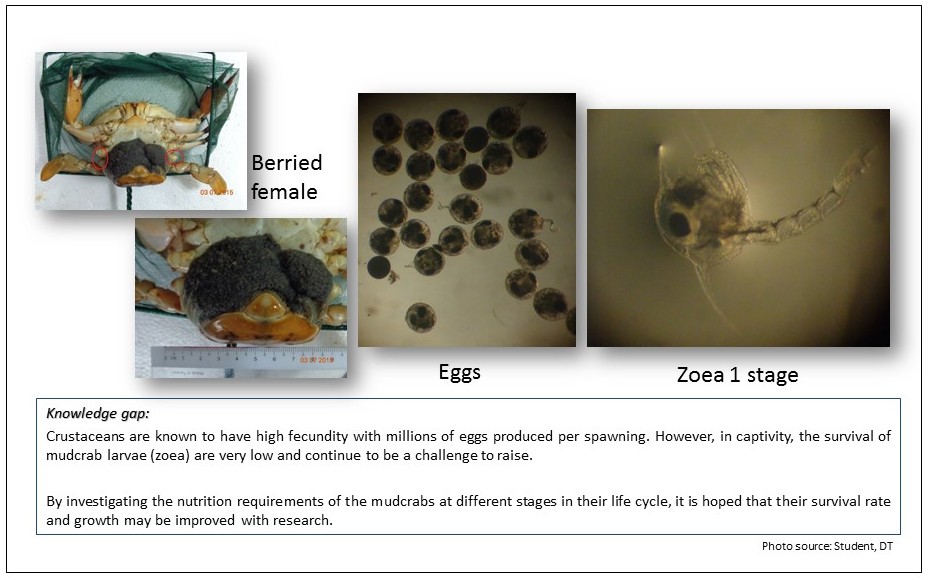Food & man: Towards improving sustainable advancement of crustacean mariculture. An introduction to the crustacean culture laboratory
Annette Jaya Ram
Centre for Marine & Coastal Studies (CEMACS), Universiti Sains Malaysia, 11800 USM Penang, Malaysia.
Author’s email: Alamat emel ini dilindungi dari Spambot. Anda perlu hidupkan JavaScript untuk melihatnya.
Summary of Research
Eliminating hunger, promoting health and reducing poverty has been one of the key roles of the fisheries and aquaculture sector. Crustaceans, like other fish and seafood, are nutritious and are a vital source of protein and essential nutrients, especially for many poorer members of the global community. However, it is important to initiate focuses on promoting sustainable use and conservation of aquatic renewable resources in an economically, socially and environmentally responsible manner (FAO, 2014). Reliance on wild fisheries is heavily impacting the population of many a species. It is our duty as humans to respect and exercise responsible development of the aquaculture sector to ensure lasting benefits for food security and economic growth for the community. Crustaceans such as prawns, crabs and lobsters are source of nutrition and food for humans. Without a doubt they are also popular due to their delicious flesh and flavour. Mud crab (Scylla spp.) aquaculture has gained the interest of many in the coastal areas of southern Asia, south-east Asia and also in southern China (Paterson & Mann, 2011). The relatively high prices and marketability of mud crabs have further increased the popularity of these crustaceans as candidate mariculture species. These tasty morsels have been the subject of study and been investigated to satisfy the ever increasing human demand for crabs as food.
At present time, this laboratory seeks to answer fundamental questions to improve the mariculture of mud crabs. As of now, mud crabs, like other crustaceans, have a high fecundity rate and produce millions of eggs per spawn. However, the survival of mudcrab zoea (larvae) are low and continue to be a challenge to raise. It is of utmost importance to bypass this bottleneck hurdle in order to produce viable mud crab seed in captivity. The main focus would be targeted at understanding the nutritional requirements of the crabs at different stages in their life cycle to improve survival rates and growth parameters. Pipe line research would include development of commercial feed for mud crab juveniles and broodstock, as it is currently unavailable in the market, whilst crab farmers are relying on shrimp pellets to feed their crabs. Other areas of interest to be tackled in this laboratory would be the effect of food on the expression of nutritionally related genes (nutrigenomics) and the immune system of the mud crab. It is envisioned that other crustacean species which appeals to the human palate, such as the mantis shrimp or the slipper lobster, which are always sourced from the wild, may be included in future studies to investigate their capacities to be sustainable mariculture species.
References:
Food and Agriculture Organization of the United Nations (FAO). 2014. The state of world fisheries and aquaculture. Rome. 223 pp.
Paterson, B. D. and Mann, D. L. (2011). Mud crab aquaculture, in Recent advances and new species in aquaculture. Eds. R. K. Fotedar and B. F. Phillips), Wiley-Blackwell, Oxford, UK. 115 – 135.
- Hits: 4523
